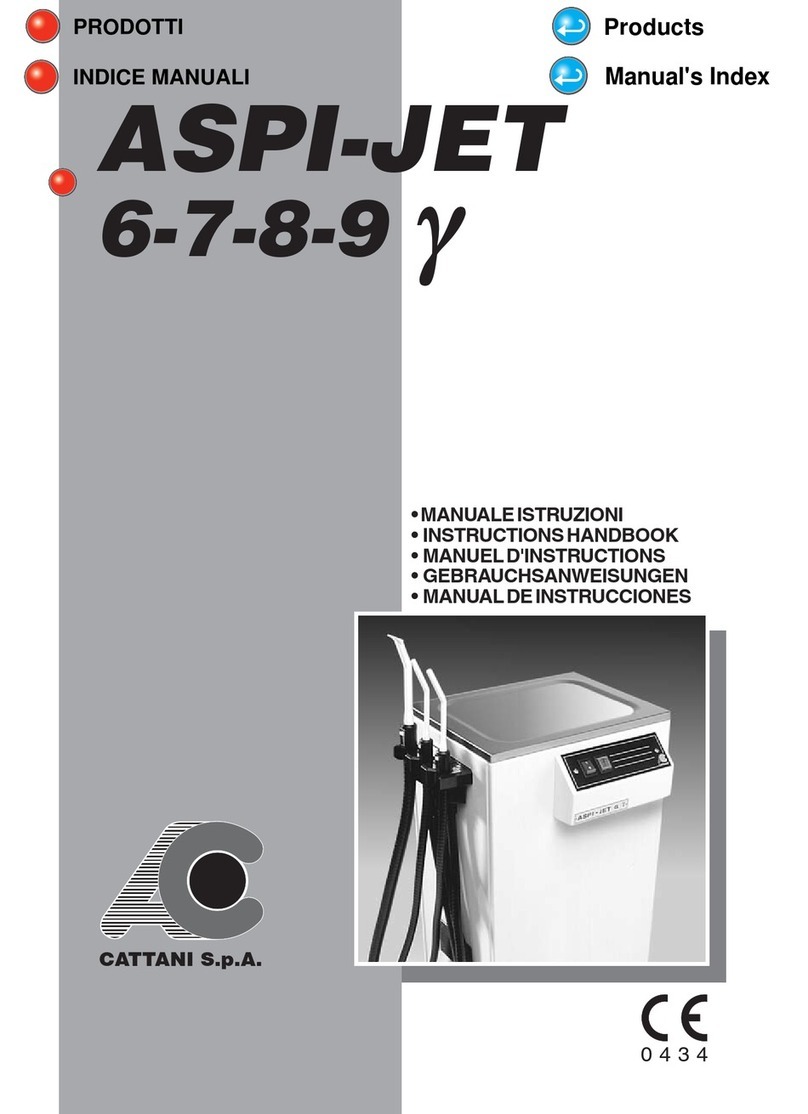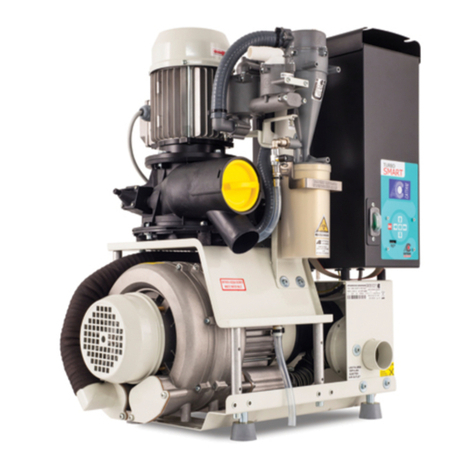
10
cod: ed. 09-2021
Make sure that the suction tubes are clear from
debris. Insert the Ø 50 mm tube provided into
“SUCTION” inlet no. (9), connect the suction of the
Blok-Jet Silent unit to the central system of the
clinic. Connect the Ø 50 mm heat-resistant tube to
tube holder (10) (“EXHAUST AIR”). Exhausted air
can be connected to an antibacterial filter (optional)
and to a silencer (optional). Hot exhausted air must
be conveyed outside. The liquids separated by the
suction unit of Blok-Jet Silent will be conveyed, via
the Ø 20 mm hose connected to the WASTE WATER
hose connector no. (8), into the drain of the clinic,
which needs to be on a lower level. Connect the Ø 8
mm tube holder (11) (“SAFETY WASTE WATER”) to
the liquid drain. The tubes connecting the machine
to the suction system are flexible in order to dampen
the small vibrations produced by the operation of
the suction unit. When Blok-Jet Silent is installed on
a lower level than the surgeries, the suction piping
must go down to the level of the suction unit, with
a couple of metres of piping laid horizontally on the
same level before connecting with the suction unit.
This will remove the acceleration that the liquids
produce when flowing down from the surgeries.
Before starting the compressor ensure that the
tubes are clean. With the Ø 10 mm tube inserted
in tube holder no. (7), connect Blok-Jet Silent to
the compressed air system of the clinic. Connect
the condensate drain tube provided to tube holder
no. (6). Carefully read the data plate on your Blok-
Jet Silent, check power voltage and frequency;
incorrect power supply can damage the equipment,
compromise its operation and cause fire. When
assembly is complete, connect the power cable
of the suction unit (2) and the power cable of the
compressor (1) in accordance with regulation EN
61008-1. Connect the permissive (clean contact)
(4) arriving from the dental units. Ensure that the
contact is clean (not live). Lastly, connect the alarm
signals (3-5) to the reception desk.






























